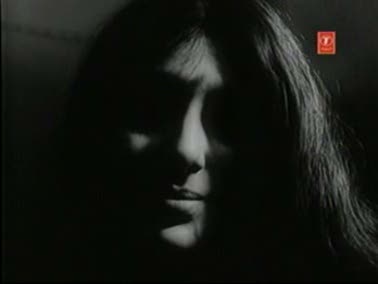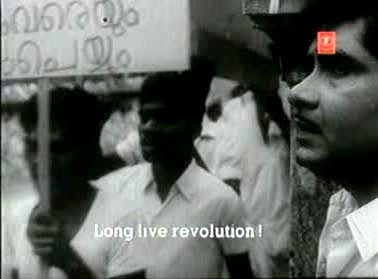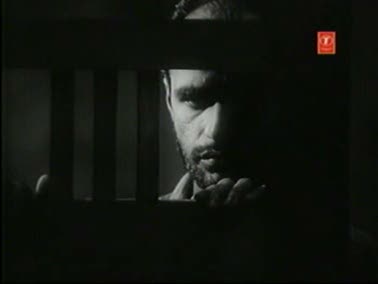A quick note on Swayamvaram (1972)
Spoilers below. I also must admit that the print I saw it on, on YouTube, was such that I am not adequately equipped to discuss the visuals here. A shame because there is certainly stuff to talk about….
A debut film like Swayamvaram is as masterful as they come. Like Pather Panchali, it places its peerless auteur’s sociopolitical interests in clear view while it also builds and communicates his story with an emotional heft uncommon outside of the mainstream melodramas that tend to overtake everything we think of as “Indian cinema”.
And yet Adoor Gopalakrishnan is as Indian a filmmaker as they come. He is committed to the idea of India, and in this smashing debut from 1972, he makes this complicated idea come to life in a compelling, moving, ever-politicized way. Swayamvaram is, at heart, about the almost inevitable betrayal of revolution by revolutionaries. The film follows two young lovers who flee from an unknown “Northern Kerala” family background to shack up together in the big city. The boy, played by Madhu, is an aspiring writer, while the girl, played wonderfully by Sharada, tags along, smitten and almost swept away by this young revolutionary’s fervor. There is nothing overtly political in any of the initial scenes. Gopalakrishnan–for the first half hour or so–uses the bare minimum of dialogue and assembles an extended, fragmented montage of moments experienced by two lovers whose greatest “revolution” is this ecstatic first step they’ve taken. The young writer’s novel is in fact titled “Ecastasy”, as if Gopalakrishnan with that one word is cluing us into where these people are–in the throes of a pleasure that their nascent independence has granted them.
Ground realities set in, however, as they always do for independence movements of any kind, as the couple begins to face serious, practical problems post-elopement. (Mani Ratnam would re-stage this basic scenario over two decades later in Alai Payuthey, even if the politics is almost entirely sapped from that perfectly enjoyable but ultimately very minor film.) The young writer, the default “leader” of this domestic “movement” tries unsuccessfully to push his manuscript, which is rejected as overly sentimental. The honeymoon is over in every sense, and the revolutionary, taking his first defeat, turns to teaching Zoology at a local private school to pay the bills. At home things begin to sour as money is stretched and they move from a reasonable hotel, to a cheap hotel, to, ultimately, a slum where their neighbor is a prostitute with two kids and a lecherous landlord.
Gradually the onetime writer loses even the veneer of an academic day job as there are cutbacks. He turns further away from the idealism, the romantic notion of being a writer, moving further away from ideas of any kind as he is laid off at the school and turns to a clerk position at a saw mill. He has moved literally from a world of ideas to a world of earthly things–trees being shaved, cut, eviscerated and turned into materials all around him. He learns that his position came at the cost of another worker who mouthed off to management, and he is haunted by this dejected, abused working man’s ghostly presence (Gopi works wonders with all of two minutes of screen time) as well as the “revolutionary” fervor of union protesters all of whom remind him of what he has left behind–the spirit of revolution– in falling into a “domestic” framework that he and his love had probably fled from. There is also the passage involving a co-worker at the mill who falls ill and who our protagonist dutifully visits, compelled to do so because in the old, battered man who lays sick, he perhaps sees where he is headed on this path of complacency. He cannot look away.
At the very end, when he dies, contracting his own sickness–in every way similar to the co-worker whom he visited– one imagines the revolution might also die. But Gopalakrishnan leaves things open. On the one hand, the young widow, now saddled with a child, refuses a male neighbor’s offer to take care of her. She also rejects the possibility of returning to her parents (which would thereby truly extinguishing “revolution”) for help. The last moment is truly mesmerizing. We see her feeding her child, and she suddenly notices that there’s a storm blasting outside, right outside her door. Her eyes fall on a print of a goddess on her wall, and then, finally, to the closed door, the sound of the wind and the rain playing over the moment and our thoughts divided by the fear of what’s awaiting this woman outside that door, and the confidence from what can only be described as a renewed revolutionary’s hardened, resolved gaze.




November 17, 2010 at 8:43 AM
Will get to this after I watch the film but great to have one waiting from you..
LikeLike
November 17, 2010 at 10:56 AM
Would love to hear your thoughts here. Unfortunately the YouTube on this is fairly poor but one doesn’t get the chance to see an Adoor film very often.
LikeLike
November 17, 2010 at 3:48 PM
GF,
I have a nice VCD copy. Let me know if you need some images to embed in this writeup.
Have you seen playwright Thoppil bhasi written, A Vincent directed “Thulabharam”, melodrama with Sharada playing the tragic wife whose widowed in the end (her husband played by Prem Nazir, is a victim of trade union) with children. The film ends on an extremely manipulative note with the widow killing her children and survives her suicide. Eventually is awarded capital punishment. Unabashedly over-sentimental mainstream musical. What songs! Devarajan-KJY classic.
But what’s interesting is the cast of Sharada, Madhu, Adoor Bhasi, Thikkurissi – who were all part of this film. Thulabharam (which also won NA for excellent Sharada performance) strikes my mind whenever Swayamvaram is brought up.
LikeLike
November 17, 2010 at 4:04 PM
Thanks for the offer WSS, but no need to trouble yourself. I’m hell-bent on getting this as it’s immediately become a very important film in my book. Any advice on how the VCD can be got would be much appreciated.
LikeLike
November 17, 2010 at 5:15 PM
Got a copy from acquaintance. I’m not fully sure but I believe he’d got it from vcd shop in Thrissur. Have to confirm again. Has the same red ‘T’ label as in the posted images from youtube.
LikeLike
November 17, 2010 at 4:16 PM
As for Thulabharam this is of course something of a melodramatic hallmark though I don’t remember liking it very much…Sharada notwithstanding.
LikeLike
November 17, 2010 at 5:22 PM
GF, excellent writeup. I watched this a long time ago and haven’t got around to watching this on You Tube yet, but this makes me want to revisit it.
Although Madhu in general was fairly limited performer, this movie shows what he could do in the right hands.
LikeLike
November 17, 2010 at 5:27 PM
Thank you, CG. I’d definitely recommend watching it even on that wretched YouTube transfer.
Madhu was really very fine in this film. In some of these frames he bears a striking resemblance to Raj Kapoor.
LikeLike
November 17, 2010 at 5:31 PM
Oh, he was a good looking dude without a doubt, I think better looking than the feted Prem Nazir, with a really good voice to boot. In most of his movies, he’s been extremely stilted and mannered which was why Swayamvaram came as a very pleasant surprise.
LikeLike
November 17, 2010 at 5:37 PM
By “fine” I was referring to his performance, but yes, he was a handsome man for sure.
And yeah, he’s certainly been mannered in some stuff, but then that was the call of the age.
LikeLike
November 17, 2010 at 5:38 PM
Here are some snapshots from my copy..

LikeLike
November 17, 2010 at 6:05 PM
Thanks sir. I’ll put these up.
LikeLike
November 17, 2010 at 7:48 PM
Glad to be of some help..
LikeLike
November 18, 2010 at 3:30 PM
Thanks GF, both for this piece and (of course) for the shout out that it’s available on youtube. You place the film in context, and this is a theme I have a great weakness for (reading the piece I was reminded of Ray’s so-called “Calcutta trilogy” (I am thinking, in particular, of Pratidwandi, the visuals and texture of which I just love)); it can be so illuminating to see the same theme refracted differently by two masters of (what I can guess, based on my limited exposure to Adoor’s work) very different temperament.
LikeLike
November 18, 2010 at 3:37 PM
Great note here. In some ways this film mixes Ray’s concerns in both Pratidwandi and Mahanagar.
Hope you get to see it, Q. Apparently anytamil has this VCD, and if it’s got the subs, I’ll let you know.
LikeLike
November 18, 2010 at 3:40 PM
Yes, please do so — I would like nothing better than to go through legit channels for this filmmaker’s work, if only to encourage them to put more stuff out there! Sadly the transfers on Elippathayam and Nizhalkuttu cannot be achieved by a VCD, but one takes what one can…
LikeLike